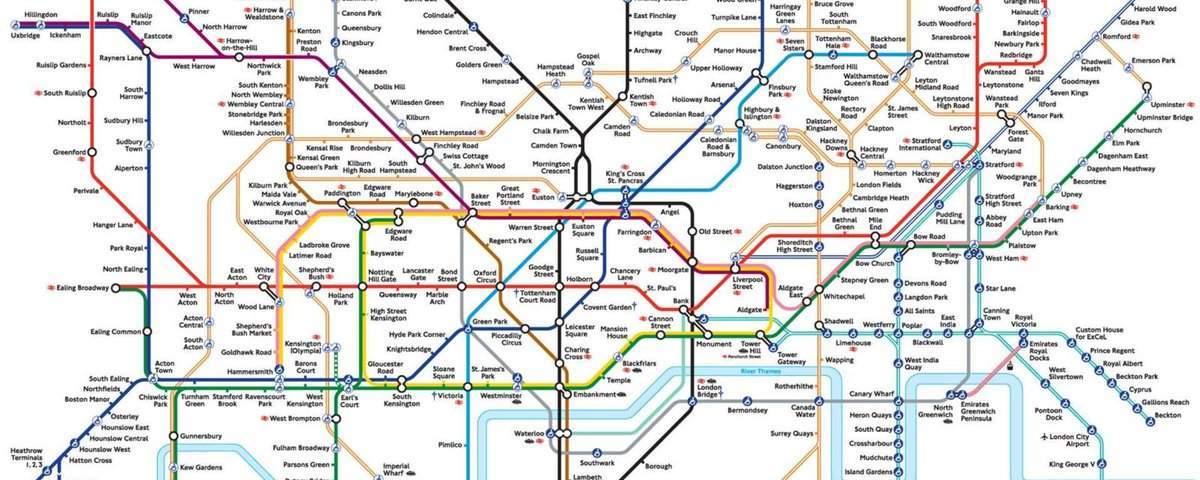
UK commuters who travel on the underground breathe in more than eight times as much polluted air as those who drive to work, according to a study published last week.
Monitors worn by people who went on the Tube were exposed to 68mg of harmful pollutant PM10, while drivers were exposed to just 8.2mg.
The levels of PM10, tiny particles of soot, were highest on Victoria and Northern line trains, because windows were always left open, according to the University of Surrey report.
Passengers on the District line in trains with closed windows were exposed to far lower concentrations of PM10 than those travelling on trains with open windows on the same line.
Although drivers did not come into contact with as many pollutants, the types of toxins given out by cars are more harmful than those circulating on the Underground.
“We found that there is definitely an element of environmental injustice among those commuting in London, with those who create the most pollution having the least exposure to it,” said Prashant Kumar, one of the report’s authors.
How well do you really know your competitors?
Access the most comprehensive Company Profiles on the market, powered by GlobalData. Save hours of research. Gain competitive edge.
 Company Profile – free sample
Company Profile – free sampleThank you!
Your download email will arrive shortly
Not ready to buy yet? Download a free sample
We are confident about the unique quality of our Company Profiles. However, we want you to make the most beneficial decision for your business, so we offer a free sample that you can download by submitting the below form
By GlobalData
“The relatively new airtight trains with closed windows showed a significant difference to the levels of particles people are exposed to over time, suggesting that operators should consider this aspect during any upgrade of Underground trains, along with the ways to improve ventilation in underground tunnels.”
The morning commute has more pollutants than the afternoon and evening journeys, the report also revealed.
“Levels of dust on the Tube … remain well below the limit set by the Health and Safety Executive. We always consider the results of research in this area and will review this study,” said Olivia Carlton, Transport for London’s head of occupational health in a statement responding to the report’s findings.
Until now, TfL has “misled the public” and not done enough to tackle pollution throughout the London underground system, Simon Birkett, founder and director of campaign group Clean Air in London told Verdict.
“It’s a relief to see TfL letting scientists begin to study tube dust. For far too long, they’ve covered up the problem, refused or failed to get COMEAP to update its 1998 advice on the issue and misled people into thinking that any level of tube dust below the maximum allowed is ‘safe’,” he said.
“This excellent study confirms that particle mass concentration – which is the best all-round indicator of health risks from particulate matter – is far higher on the tube than in surface modes. TfL should act on this research and seal tube windows, reduce general particle levels, introduce platform barriers (as on the Jubilee line) and actively warn the most vulnerable users about the dangers of breathing tube dust,” he added.
In just five days at the end of of January, pollution in London reached its annual limit, surpassing levels in Beijing.
Mayor Sadiq Khan promptly issued a “very high” air pollution alert in the capital.
“You shouldn’t have to brave toxic fumes every day just to get to work or school,” James Thornton, the chief executive of ClientEarth, an environmental law organisation told Verdict.
“Almost every day now, we see new evidence of the harm that air pollution is doing to people, particularly the young and the vulnerable. It’s time the government took decisive action. We need a network of clean air zones to keep the most polluting diesel vehicles from the most polluted parts of our towns and cities and incentives, like a targeted diesel scrappage scheme, to move people onto cleaner modes of transport.”
Last year, a report released by the Royal College of Physicians (RCP) revealed air pollution was linked to 40,000 deaths annually across the UK.







